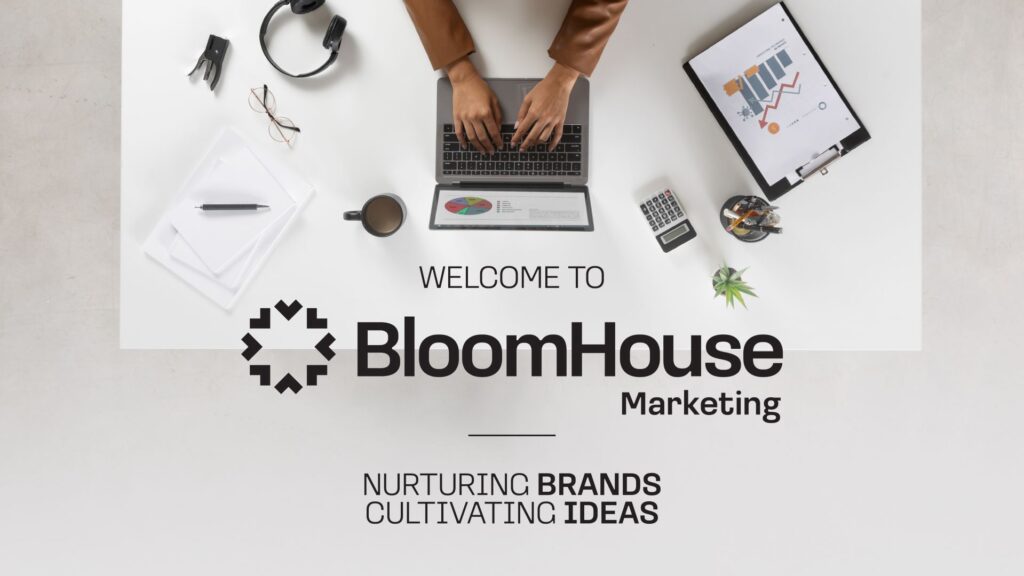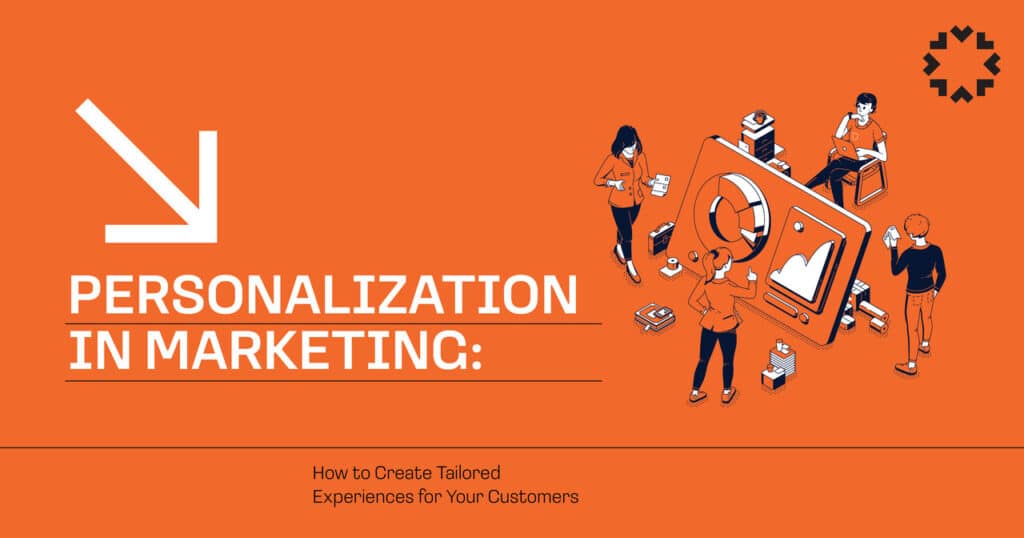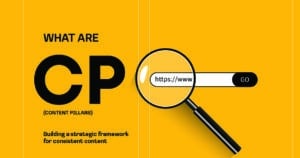Consumers have become accustomed to personalized experiences in today’s fast-paced digital world. Whether receiving product recommendations based on previous purchases or tailored content that speaks directly to their needs, personalization is no longer just a nice-to-have; it’s necessary for businesses looking to thrive in a competitive landscape.
Fundamental Insights
- Know Your Customers: Collect data and develop customer personas to understand their preferences and behaviors. Knowing your customers is a foundation for successful personalization.
- Leverage Technology: Use data-driven marketing tools, dynamic content, and automation to enhance personalization in marketing efforts without losing the human touch.
- Measure and Adapt: Continuously monitor the impact of personalization through relevant metrics and stay open to evolving your strategy based on the data and feedback.
But what exactly is personalization in marketing? How can businesses create tailored experiences that resonate with their customers? In this post, we’ll explore the ins and outs of personalization, discuss the importance of understanding your customers, delve into strategies for effective personalization, and highlight the challenges and considerations to keep in mind. By the end, you’ll have a solid foundation to implement personalization in your marketing efforts!
What Does Personalization in Marketing Entail?
Personalization in marketing essentially means crafting a message, content, or experience according to individual customers’ preferences, behaviors, and demographics. This comprises many tactics, from tailored email campaigns and targeted ads to product recommendations on a commercial website.
Personalization Can Take On Many Forms
- Dynamic content: Content that changes according to user behavior or profile.
- Targeted Emails: Emails that cater to specific customer segments or even individuals.
- Product Recommendations: Suggestions drawn from prior purchases or browsing history.
- The objective is clear: to make a more relevant and compelling customer experience that leads to better conversion and loyalty.
The Significance of Personalization
Why is personalization so necessary for businesses in today’s world? A change in the expectations of consumers explains why. Today’s customers expect to be recognized by brands, understood, and provided with content and offers that resonate with their needs by brands with access to abundant information.
Here are some intriguing statistics worth pondering:
- Better Customer Experience: According to Epsilon, 80% of consumers will increase their chances of buying if brands offer more personalized experiences.
- Higher Engagement: Accenture research found that 91% of consumers are likelier to shop with brands that recognize, remember, and provide relevant offers and recommendations.
- More Loyalty: According to the Salesforce report, 66% of customers believe that a company ought to know their needs and expectations.
These statistics reveal an obvious message: personalization is not a fad, but a sea change in how businesses connect with their customers.
Know Your Customer
To effectively design personalized marketing strategies, one needs to first understand the critical aspects of who their customers are and what they want. It involves gathering relevant information and insight into their tastes, behavior, and other demographics.
Collecting Customer Information
The best foundation for successful personalization is data. The better you understand your customers, the more effectively you can personalize your marketing strategy. Here are several ways to gather customer data:
- Web Analytics: Tools such as Google Analytics can monitor user behavior on your website, aiding you in comprehending how visitors engage with your content and identify their preferred products.
- Social Media: Monitoring social media engagement provides insights into what customers are interested in or show an affinity for. Based on the content they find engaging, you may customize your marketing campaigns to fit their preferences.
The history of purchases can even be used to examine patterns that may help one make recommendations in the future. While collecting data is important, ethically, collecting it is equally important. Always seek consent before using customer information.
Create Customer Personas
You gather enough data to create customer personas. These fictional characterizations based on real data about your ideal customers allow you to visualize whom you’re marketing to and adjust your strategies accordingly.
The Crafting of Effective Customer Personas
- Identify Key Characteristics: Use the data you’ve collected to identify key characteristics such as demographics, interests, pain points, and buying behaviors.
- Create Elaborate Profiles: Develop rich profiles that include names, ages, job titles, interests, and preferences. This will make your personas more colorful and plausible.
- Segment Your Audience: Group your personas by common characteristics. This will allow you to tailor your marketing messages more effectively.
For example, if you run an online clothing business, you’ll probably want to create personas for style-forward millennials, budget-conscious parents, and environmentally-conscious consumers. Each persona will require a unique approach in terms of marketing message, products offered, and communication channels.
Strategies for Personalization
With a clear understanding of your customers, it is time to immerse yourself in actionable strategies for personalization. Below are several effective tactics to contemplate:
Harnessing Data for Customized Marketing
Data-driven marketing is a powerful tool for delivering tailored experiences. By carefully understanding consumer behavior and preferences, marketing campaigns can be designed that hit the spot.
Let’s say you own an online bookstore. Using browsing history, you can send targeted emails to customers with suggestions based on what they browsed in a previously expressed interest category. The bottom line will be a great customer experience and maximized conversion rates.
Segmentation for Better Targeting
Segmentation is dividing your customer base into small groups based on specific criteria. It allows you to customize your marketing efforts and be more effective.
Here are some standard segmentation criteria:
- Demographics: Age, gender, income level, etc.
- Behavior: Segment customers based on their past purchases, engagement levels, and website activity.
You will be able to provide marketing messages that can suit the needs and preferences of specific groups with the help of audience segmentation. For instance, if you see a set of customers constantly purchasing fitness products, you can adjust your marketing communication to showcase the new arrivals within that category.
Dynamic Content and Recommendations
Dynamic content serves as a potent tool for amplifying personalization. It entails presenting diverse content to various users tailored to their preferences or behaviors. For instance, if a user often explores outdoor gear on your website, you can present them with a bespoke landing page showcasing products that align with their interests.
Personalized product recommendations, too, can profoundly affect conversion rates. Platforms like Amazon have perfected this strategy by proposing products aligning with users’ browsing and purchasing histories.
Email Marketing Personalization
Email marketing continues to be one of the most powerful avenues for personalization. By harnessing customer data, you can craft meticulously targeted email campaigns that foster engagement and boost conversions.
- Personalized Subject Lines: “John, your favorite books are on sale!” Grab attention by using the customer’s name or reference to a past purchase in a subject line.
- Customized Content: Segment your email list and target content based on user preferences. Send offers, related product recommendations, and offers exclusive to targeted groups.
- Automate Triggered Emails: Implement automated messages that react upon certain actions, such as reminders about left carts or follow-up emails post-purchase. These can be tailored to influence customers to complete the transaction or provide more value post-acquisition.
Web Personalization
Most importantly, crafting a tailored experience on your website is key to exciting visitors and conversion rates. Consider the following tactics:
- Personalized Landing Pages: Create landing pages based on specific interests, depending on the different customer segments. For example, if a visitor comes from a specific marketing campaign, then adjust the content to align with the visitor’s interests.
- User-Generated Content: Incorporate user-generated content, such as reviews and testimonials, to build trust and authenticity. Showcase positive experiences from customers who share similar demographics or interests.
- A/B Testing: Continuously test different elements on your website to determine what best resonates with your audience. Experiment with personalized messaging, layouts, and calls to action to optimize the user experience.
Social Media Personalization
Social media is a remarkable platform for personalization. Connect with your audience by crafting content that resonates with their interests and preferences.
- Targeted Ads: Create targeted ads on social media platforms based on user demographics and behaviors. Customize your messaging to align with each audience segment.
- Community Engagement: Create a community for your brand that invites user interaction and sharing. Interact promptly with all comments and messages. You appreciate customer feedback.
- Influencer Collaborations: Partner with influencers who align with your brand values and target audience. Their personalized recommendations can enhance your brand’s credibility and reach.
Assessing the Effectiveness of Personalization
To guarantee the effectiveness of your personalization efforts, it is essential to assess their impact. Below are several key performance indicators (KPIs) to keep in mind:
Key Performance Indicators (KPIs)
- Conversion Rates: Monitor the proportion of visitors who fulfill intended actions, such as purchasing or subscribing to a newsletter. Assess conversion rates both before and following the introduction of personalization strategies.
- Customer Engagement: Track engagement metrics such as click-through rates, time spent on site, and interactions with your social media. High engagement is often a signal that your personalized content is relevant to your audience.
- Customer Retention: Measure customer retention rates to determine the strength of your audience’s relationships. Personalized experiences can lead to increased loyalty and repeat purchases.
Continuous improvement
Personalization is a journey without an end. To enhance your strategies consistently, it is vital to scrutinize data and adjust your methods accordingly perpetually. Below are some suggestions for continuous advancement:
- Collect feedback: Allow customers to give feedback on their experience. Use surveys and polls, among other methods, to get insights and adjust based on their suggestions.
- Analyze Trends: Monitor industry trends and evolving consumer behaviors. Stay updated on new personalization technologies and best practices.
- Test and Optimize: Continuously test different strategies to see what works best for your audience. A/B testing might be your best bet to spot the most effective approaches toward personalization.
Challenges and Considerations
Though personalization has the power to enrich customer experiences significantly, it is crucial to recognize the challenges and considerations that accompany it.
Data Privacy Issue
With rising regulations regarding data protection, businesses should be very cautious about how they collect and subsequently utilize customer data. Communicate to them what data you collect and how that data is used.
Tip: Implement robust data protection measures and provide clear privacy policies to build trust with your customers.
Balancing Personalization and Automation
Although automation is crucial for achieving scalability, finding the appropriate equilibrium between personalization and automation can prove challenging. Excessive automation may result in impersonal experiences detached from the customer’s true needs.
Tip: Seam together automation with personal touches to maintain human elements in communications. Add customer names and personalized recommendations to automated messages to enhance your overall experience.
Avoid Over-Personalization
While personalization does have its benefits, over-implementation can lead to an unsavory experience. As soon as a customer feels they are watched too closely, it can create discomfort and eventually cause disengagement.
Tip: Be mindful of the amount of information you use to personalize. Strive for the right balance that gives customers a sense of value without infringing on privacy.
Final Thoughts
In conclusion, the personalization of marketing is crucial in crafting tailored experiences that truly resonate with customers. You can significantly enhance customer engagement, boost conversions, and nurture brand loyalty by gaining insight into your audience, utilizing data effectively, and executing well-thought-out strategies.
As you embark on this journey of personalization, remember that it is a continual process that demands ongoing adaptation and improvement. So, take the plunge—begin personalizing your marketing efforts today, and witness your business flourish amidst the competitive landscape!
FAQs
- What is the difference between personalization and customization?
Personalization is the art of designing experiences guided by data as well as customer behaviors, while customization allows the customer to tailor an experience according to his/her preferences.
- How can I begin personalizing my marketing?
It means starting from customer data acquisition via surveys and analytics, creating customer personas, and executing targeted marketing activities based on insights obtained.
- What are some personalization-enabling tools?
You can collect and track customer data through various tools, such as email marketing tools like Mailchimp, CRM systems like HubSpot, and analytics tools like Google Analytics.
- How frequently do I need to update my customer personas?
Revisit and refresh your customer personas frequently with new information, including evolving customer behavior and shifting market trends, so they continue to be relevant.
- What are some common errors related to personalization?
One should avoid over-personalization, failing to segment the right audience, ignoring data privacy issues, and not measuring the effectiveness of personalization efforts.









